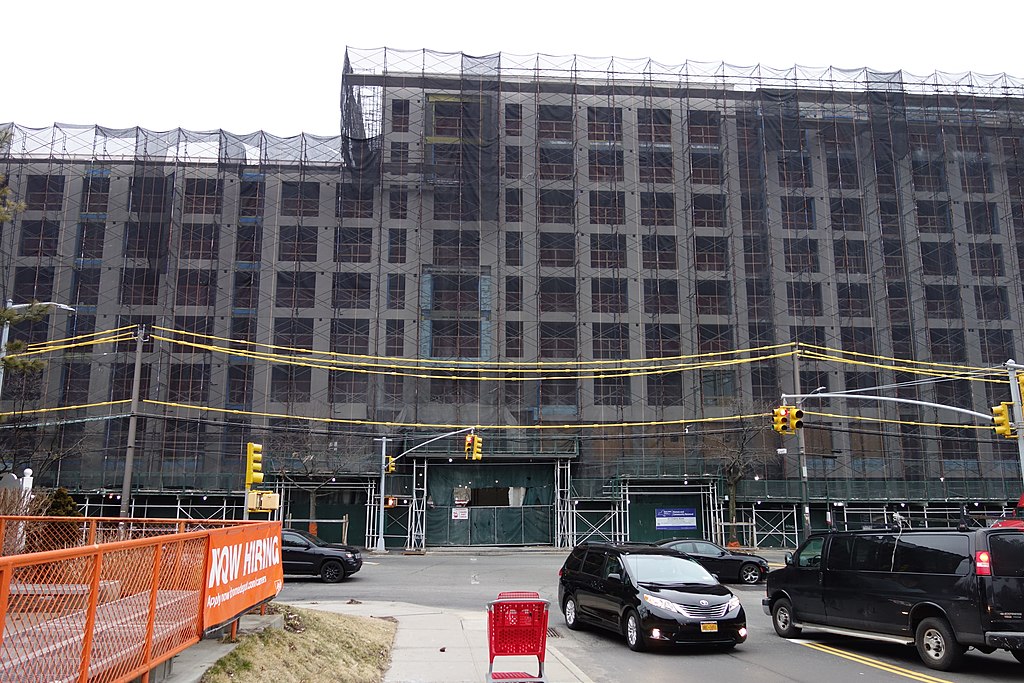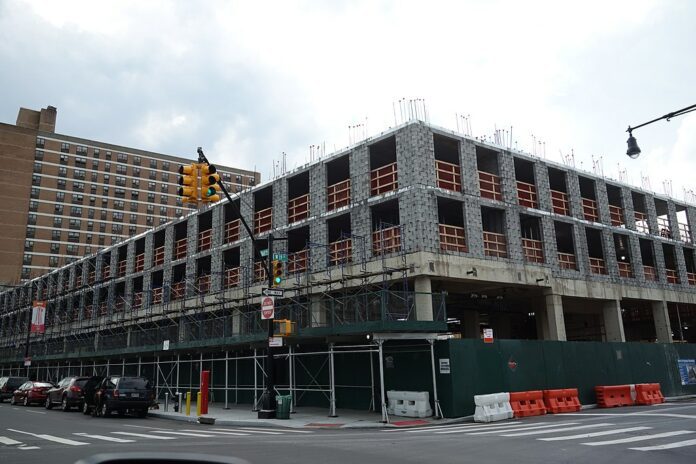New York’s 421-a program utilized tax breaks as an incentive for developers to construct affordable housing. The controversial program expired on June 15 with no replacement set to pass yet. Governor Kathy Hochul proposed a revamped tax break system under a new program called 485-w, but it didn’t have enough support to move through the state legislature.
The 421-a program gave developers a tax exemption if they set aside a percentage of their units for low and moderate income tenants. The qualifying portion of affordable units per building ranged from 25% to 30%, varying based on area median income.
Supporters of the tax breaks argue that it provides a financial incentive and feasibility for developers to offer subsidized, affordable residential units. Critics of the program point out that the program is very expensive for taxpayers, and that wealthy developers don’t need financial assistance to create affordable housing units.
The vast majority of newly-constructed affordable housing units in New York were built under the 421-a program. The absence of these tax incentives raises concerns for many New Yorkers—Will developers continue to build affordable housing, which is desperately needed? Should the city focus on building more market-rate housing to bring down the median cost of rent? Why is building new affordable housing so difficult?
There is a great deal of uncertainty and disagreement within the private and public sectors over how the state should move forward. The 421-a first expired in 2016 before becoming law again in 2017, but there is more political opposition to renewing the tax incentives now than there was five years ago.
Developers Are Concerned About the Expiration of 421-a
NYC developers recently sounded the alarm bells, arguing that residential development in NYC would grind to a halt without 421-a. Certain developers said they would focus on constructing other kinds of buildings, or temporarily move their business to other nearby cities like Philadelphia.
The main concern is meeting The Big Apple’s mandatory inclusionary zoning laws in the absence of tax credits. Without the tax subsidies, real estate professionals argue that meeting those zoning requirements isn’t financially feasible.
In an interview with Bisnow, Joy Construction’s principal Eli Weiss said that 421a’s expiration “screws up mandatory inclusionary housing, because if you have a project that was in a rezoning, you’re required to do 25% or 30% affordable,” he added. “But you don’t get the tax abatement for it, so it makes the math even worse.”
There is a low income housing tax credit available to developers who wish to construct 100% affordable buildings, but Weiss sees that tax break as only feasible in certain parts of the city.
“If you’re a landowner in a prime neighborhood, you’re not going to sell land for $75 a foot … it’s going to be very difficult. We’re going to have to look in areas like the Bronx and far out in Brooklyn and certain neighborhoods in Queens,” he said.
NYC’s Political Battles Over Housing
New York is a majority Democratic city, but it remains divided on a host of hot-button political issues. Housing is a prime example. One of the most progressive state assembly districts in New York exemplifies this divide. Deborah Glick, who represents affluent Manhattan neighborhoods like NoHo, Greenwich Village, and Tribeca, has a legitimate challenge in her district from Ryder Kessler.
Glick opposed the most recent rezoning of SoHo and NoHo, which would add thousands more market-rate apartments to the two neighborhoods. She believes that new construction in her district should be predominantly affordable, subsidized units. Kessler, who is endorsed by a pro-development group, believes that more market-rate housing is necessary to address Manhattan’s housing crisis.
“I think it’s about the status quo that’s not working and has led to rising rents, more evictions, and more homelessness,” Kessler said of his campaign.
Glick would argue that building more market-rate apartments in her neighborhood won’t make it more affordable. Subsidized housing would allow more low-income New Yorkers to move into her district, which has some of the most expensive rents in the country. Kessler would argue that many districts throughout New York are opposed to market-rate housing, which contributes to rapidly rising rents, homelessness, and population decline.
“We have developed few units relative to the population of the city,” Kessler said. “When we think, ‘What can we do to lower rents?’ one piece of that puzzle is building more housing, and more housing in high opportunity, transit-rich neighborhoods.”
NYC has a severe housing and affordability crisis. Manhattan has the worst of it, with median rents in the borough reaching $4,000 in May 2022, a staggering 25% annual increase over May 2021.
Housing inventory is a clear problem. In May 2021, the borough had a vacancy rate of 7.59% with 19,025 available listings. In May 2022, the vacancy rate cratered to 1.55%, with only 5,776 available listings. Rental homes were on the market for 107 days in May 2021, but in May 2022 they were only on the market for an average of 52 days.
NYC hasn’t built enough market-rate housing to keep up with demand. Kessler argues that part of addressing NYC’s affordable housing crisis is building more market-rate housing so that renters have more options. As it stands now, landlords have negotiating power over tenants because inventory is so low. With a vacancy rate of only 1.55%, NYC has a clear shortage of market-rate housing, which makes the city unaffordable for most New Yorkers.

The Big Apple is a leader in affordable housing, and New York state actually has the most affordable residential units in the country at 490,000 subsidized housing units. Despite having just over 5% of the country’s population, that number represents 10% of the nation’s subsidized housing units. 359,000 of those subsidized units are in NYC. Another 1 million or more units in the city are rent-stabilized, which compels landlords to keep rents low regardless of tenant income.
Despite the government’s best efforts, the city still doesn’t have enough affordable units to meet the demand. Since demand is high for subsidized housing, there is low turnover. Residents also have to apply for a lottery, making the process randomized and lengthy.
Building Affordable Housing in New York is Expensive
Building affordable housing in NYC is mainly difficult because of the expenses. The cost of constructing tax-subsidized affordable apartments in New York state is more than $400,000 per unit, due to a variety of factors like the high cost of land, labor, materials, and legal professionals.
There isn’t yet a viable alternative to the 421-a tax subsidies, but Gov. Kathy Hochul is seeking an additional $25 billion in subsidized housing. It may sound like a lot of money, but its impact is muted because of the high, continuously growing cost of real estate and construction in New York.
Tyler graduated from Virginia Commonwealth University in 2017 with a Bachelor's degree in Urban and Regional Studies. Currently based in Los Angeles, he works as a freelance content writer and copywriter for companies in real estate, property management, and similar industries. Tyler's main professional passion is writing about critical issues affecting big and small cities alike, including housing affordability, homelessness, inequality, and transportation. When he isn't working, he usually plans his next road trip or explores new neighborhoods and hiking trails.



